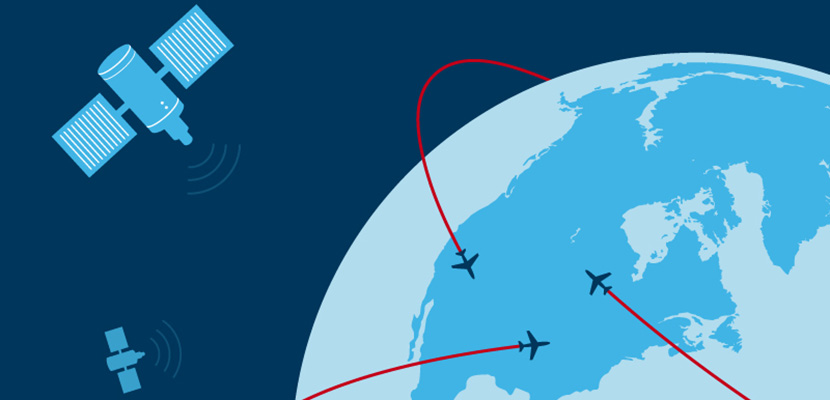
Wi-Fi has gradually become widely available on flights over the years, weakening the sensation of being completely cut off from the world outside your plane for a few hours. Accessibility to entertainment on your own device and connection with those on ground, as opposed to being limited to what in-flight services (if any) offer, has proven to be essential for enjoying a flight nowadays. However, in-flight Wi-Fi is far from foolproof, offering slow connections and high access prices. While streaming a movie on Netflix still isn’t a very feasible option when using airplane Wi-Fi, the chance of this happening could occur sooner than you think, what with three standard types of in-flight Wi-Fi now available.
In Air to Ground (ATG) Wi-Fi, a connection is designed for domestic travel over land and needs two antennas on the bottom of the plane to pick up signals from land-based cell towers. After someone switches on a plane’s ATG system, the plane will signal to different cell towers, resulting in passengers getting Wi-Fi reception. When ATG service works, it’s often only enough to provide a speed of about 3 Mbps, which correlates to enough power for simply checking emails. The Internet provider Gogo uses this almost exclusively, and has started to spread the use of ATG-4, which has four antennas connecting with a ground network. The ATG-4 service is also available on Virgin America’s entire fleet, making the airline the only one with Wi-Fi on every plane.
Satellite-based Ku-Band, often used with airline Internet providers such as Gogo, Panasonic, and Row 44, maintains a connection even when a plane flies over the ocean or is out of range from cell towers. Similar to a rooftop dish, the Ku-Band antenna has to point towards a transmitting satellite to deliver a signal. This system’s speeds are far more adequate, running at about 30—40 Mbps. Ultimate speed depends on how many aircrafts a satellite is serving, but content will load much faster than that in an ATG system.

The clear frontrunner of airplane Wi-Fi systems is Ka-Band, which is the fastest service and used with JetBlue and certain United flights. Powered by satellite provider ViaSat’s ViaSat-1 satellite, Wi-Fi speeds of up to 70 Mbps are provided. As of now, the service is only set up for United States usage, but plans to launch a second satellite in the first quarter of 2017 will bring access to Canada and parts of Europe. The ViaSat-1 satellite also includes the 12 Mbps Exede service, which is used for JetBlue’s free “Fly-Fi” service.
However, for airplane Wi-Fi to work, an aircraft also has to rely on more than just satellites. Commercial aircrafts now have a series of black boxes underneath their wall panels that are in-flight Wi-Fi access points. These Wireless Access Points (WAPs) are connected by a QuadRax cable, providing faster speeds than the satellite antennas can. In these scenarios, airlines will use computers on the plane for Wi-Fi access instead.
As the technology improves, the quest to run Wi-Fi capable of streaming may soon conclude – Gogo’s recent test of ATG-4 shows that a connection could be strong enough to watch videos. Gogo is also developing a new satellite-based 2Ku service that will run up to 70 Mbps. With these improvements in store, perhaps airplane Wi-Fi will soon be as easy to use as that in our homes.
Source: The Points Guy, ViaSat, Gizmodo, Gogo
Advertisement
Learn more about Electronic Products Magazine





